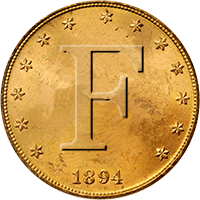I posted this on another website with one response, thought I would share it here:
It seems to me that metal detectors have not improved that much over the last 10-15 years. Lighter maybe and a few bells and whistles, but none the less still accurate and able to detect the same. Here are some observations I have made using the CXIII and comparing it to my Ace 250 (I know the comparison is one sided, but follow me on this).
The CXIII is lighter than the GTI series, Explorer series and higher end Whites. So why is the weight always brought up to discourage using one? The unit is held down at your side rather than out in front of you at an angle. Relaxing my arm to my side seems much less strenuous than holding a unit out in front of me. The CXIII has about ever bell and whistle made on ANY detector, including Treasure Talk. Combine this with the fact the when you turn the unit on, it automatically ground balances, tells you it's in the coin mode and is ready to scan. What detector is easier than that for a new person learning the ropes?
Its detection depth is 2 to 3 times that of my Ace 250. Once I learned the CXIII, I was able to:
have the option to manual ground balance or use auto tracking
control how often I want treasure talk to inform me of settings and finds
Change to VCO for pinpointing
set different tones
control volume and tone frequency
change frequencies for interference
choose to have a threshold or run silent search
regulate surface elimination to tune out junk on top of the ground
fine tuning discriminate using 24 notches instead of 12
depth meter to 12"
3 custom programmable modes
A new Ace is $212. I have seen these units go for $250 in like new condition. I traded a Bandido that I paid $235 for for my like new CXIII and that included a 4" coil with an extra lower rod.
It does take 6 C batteries, but the unit is well balanced at 3.7 pounds. It is very easy to use and program, much easier than the XLT and Explorer, in my opinion.
To me, this detector is up there with the higher end Fishers and Minelabs, though maybe not as configurable, it has some features those units don't have. Yet it sells in the Ace 250 range.
It seems to me that this detector is overlooked and merits closer inspection by newbies and mid detectorists alike. It definitely beats anything Bounty Hunter makes.
I would have paid $400+ for this, knowing what I know now. A new one was in the $899 range (list).
Just my observation, for what it's worth.
It seems to me that metal detectors have not improved that much over the last 10-15 years. Lighter maybe and a few bells and whistles, but none the less still accurate and able to detect the same. Here are some observations I have made using the CXIII and comparing it to my Ace 250 (I know the comparison is one sided, but follow me on this).
The CXIII is lighter than the GTI series, Explorer series and higher end Whites. So why is the weight always brought up to discourage using one? The unit is held down at your side rather than out in front of you at an angle. Relaxing my arm to my side seems much less strenuous than holding a unit out in front of me. The CXIII has about ever bell and whistle made on ANY detector, including Treasure Talk. Combine this with the fact the when you turn the unit on, it automatically ground balances, tells you it's in the coin mode and is ready to scan. What detector is easier than that for a new person learning the ropes?
Its detection depth is 2 to 3 times that of my Ace 250. Once I learned the CXIII, I was able to:
have the option to manual ground balance or use auto tracking
control how often I want treasure talk to inform me of settings and finds
Change to VCO for pinpointing
set different tones
control volume and tone frequency
change frequencies for interference
choose to have a threshold or run silent search
regulate surface elimination to tune out junk on top of the ground
fine tuning discriminate using 24 notches instead of 12
depth meter to 12"
3 custom programmable modes
A new Ace is $212. I have seen these units go for $250 in like new condition. I traded a Bandido that I paid $235 for for my like new CXIII and that included a 4" coil with an extra lower rod.
It does take 6 C batteries, but the unit is well balanced at 3.7 pounds. It is very easy to use and program, much easier than the XLT and Explorer, in my opinion.
To me, this detector is up there with the higher end Fishers and Minelabs, though maybe not as configurable, it has some features those units don't have. Yet it sells in the Ace 250 range.
It seems to me that this detector is overlooked and merits closer inspection by newbies and mid detectorists alike. It definitely beats anything Bounty Hunter makes.
I would have paid $400+ for this, knowing what I know now. A new one was in the $899 range (list).
Just my observation, for what it's worth.


